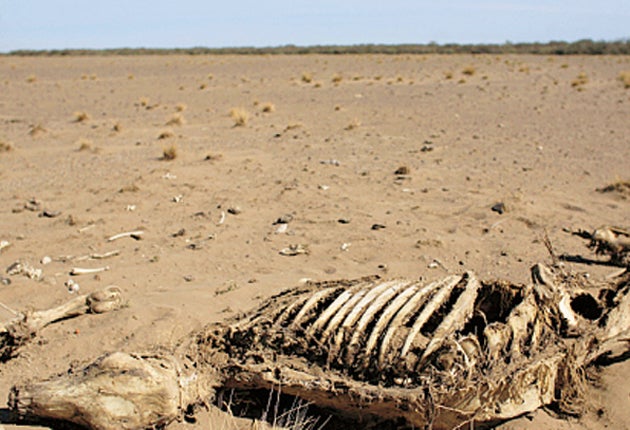Meanwhile drought hits Argentina food production

Your support helps us to tell the story
From reproductive rights to climate change to Big Tech, The Independent is on the ground when the story is developing. Whether it's investigating the financials of Elon Musk's pro-Trump PAC or producing our latest documentary, 'The A Word', which shines a light on the American women fighting for reproductive rights, we know how important it is to parse out the facts from the messaging.
At such a critical moment in US history, we need reporters on the ground. Your donation allows us to keep sending journalists to speak to both sides of the story.
The Independent is trusted by Americans across the entire political spectrum. And unlike many other quality news outlets, we choose not to lock Americans out of our reporting and analysis with paywalls. We believe quality journalism should be available to everyone, paid for by those who can afford it.
Your support makes all the difference.As Queensland buckles under heavy rains brought by La Niña, on the other side of the world, in Argentina, the weather pattern is causing the opposite problem.
The country has been dealt a heavy blow by droughts that have had a big impact on crop yields and the wider economy.
Yesterday, soybean group Acsoja estimated that production would fall by 13 per cent as a result of the water shortages. The drop comes after a record high last year, when rainfall was above average.
The impact on corn has been similarly dramatic, with persistently low rainfall in Argentina's most verdant areas depleting soil water reserves and killing crops.
La Niña, or "little girl", is the cooler counterpart to El Niño, "little boy". Currently in an unusually strong cycle, it arises when the warmer phase peters out, causing sea temperatures in the eastern Pacific to drop. That brings dry weather to the Americas and wet weather to Australasia.
The resultant problems in Argentina are not expected to let up immediately, with the warm weather likely to continue until next week.
Because the country is a key global provider of soybeans, that is likely to have a serious impact on the world market. La Niña is one significant reason for recent food inflation that has brought prices close to the record levels of three years ago. But the impact will be felt most profoundly at home. Soybeans are the largest cash crop in Argentina, bringing in about $7bn in export taxes each year. And worst-hit of all will be the farmers.
"Some farmers haven't had enough rain to put in their second soybean crops and are seeing very poor development of their corn crops," Martin Lorenzo, a farmer in northern Buenos Aires province, told the Wall Street Journal. According to Mr Lorenzo, some farmers have given up on the crop to let cattle graze in the fields.
Join our commenting forum
Join thought-provoking conversations, follow other Independent readers and see their replies
Comments